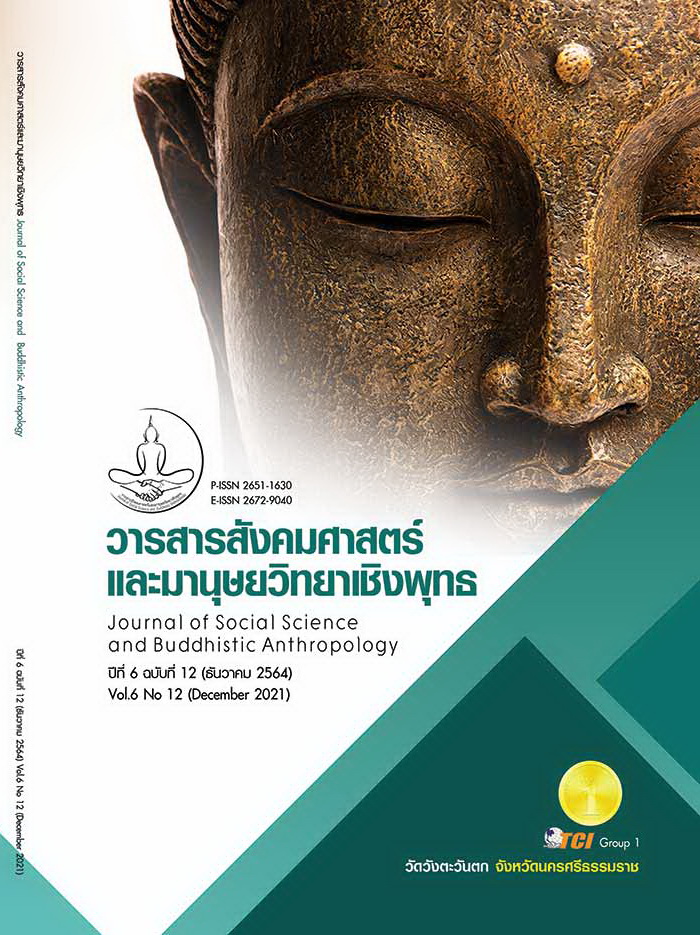THE ABSORPTION OF FINE PARTICULATE MATTER BY INDOOR PLANTS
Keywords:
Indoor Plant, Building Greenery, Dust Purifier Plant, Incense Stick, PM2.5Abstract
The objectives of this research article were to investigate the absorption of smoke produced from incense burning by 16 indoor plants and to select suitable plants for particulate matter absorption. An incense burning activity was considered as a source of indoor pollution since it produces large amount of organic and inorganic compounds, which those compounds are combined into an ultra - fine particle, which particles size are less than 10 - micron or 2.5 - micron called PM10 and PM2.5. Therefore, this study focused on the indoor PM2.5 form incense burning activities by using indoor potted plant as the air - purification strategy. Common 16 indoor plants were chosen for this experiment. The experimental procedure compared between the PM2.5 emission profile from “the empty reference chamber” and “the reference chamber with a potted plant inside” over 30 minutes of incense burning time. The PM2.5 concentration was measured in 1 - minute interval by a PM2.5 detector at the exhaust fan, which 48 samples of potted plant (3 samples per 1 species) were measured. The result showed that the Zanzibar Gem (Zamioculcas (Lodd.) Engl) and the Snake plant (Sansevieria trifasciata Prain) were the first two plant that had the highest PM2.5 absorption, which were 30.87% and 23.70% respectively. In contrast, the least PM2.5 absorption plant were the Crystal Anthurium (Anthurium schlechtendahlii Kunth) that can absorb only 7.45% of PM2.5. These absorption rate can be related with the plant architecture, which plants that grow by shooting branches and leaves vertically trend to absorb more particle since it can block the streamline of dust particle. As a result, plants have more effective surface area to contact with PM2.5 particle. On controversy, plants that grow horizontally trend to absorb less particle because leaves and branches arrange in parallel direction with smoke streamline. Consequently, PM2.5 particle were less contacted with the surface area of the leaf and have less absorption.
References
นักรบ เจริญสุข และคณะ. (2558). การพัฒนาส่วนผสมของธูปเพื่อลดสารก่อมะเร็งในควันธูป. VRU Research and Development Journal Science and Technology, 10(3), 75-84.
พาสินี สุนากร และคณะ. (2559). การศึกษาเปรียบเทียบความสามารถในการจับฝุ่นละอองของพรรณไม้เลื้อย. วารสารวิชาการ คณะสถาปัตยกรรมศาสตร์ มหาวิทยาลัยขอนแก่น, 15(2), 175-186.
วิจิตร วังใน และคณะ. (2537). การจําแนกพืชสวน. กรุงเทพมหานคร: โรงพิมพ์สํานักส่งเสริมและฝึกอบรม มหาวิทยาลัยเกษตรศาสตร์ วิทยาเขตบางเขน.
วิรัตน์ ภูวิวัฒน์. (2545). การประดับต้นไม้ภายในอาคาร. กรุงเทพมหานคร: ภาควิชาพืชสวน คณะเทคโนโลยีการเกษตร สถาบันเทคโนโลยีพระจอมเกล้าเจ้าคุณทหารลาดกระบัง.
ศุภชาติ ธรรมนิติเวทย์. (2562). การประดับต้นไม้ภายในอาคาร. วารสารเกษตรนเรศวร, 16(2), 70-86.
สำนักงานมาตรฐานผลิตภัณฑ์อุตสาหกรรม. (2550). มาตรฐานผลิตภัณฑ์อุตสาหกรรม. ธูป. มอก.2345-2550 หน้า 1-6 (24 สิงหาคม 2550).
Beckett, E. et al. (2001). Bioanalytical utility of sonovoltammetry. Journal of Pharmaceutical and Biomedical Analysis, 26(5-6), 995-1001.
Brauer, M. et al. (2000). Assessment of indoor fine aerosol contributions from environmental tobacco smoke and cooking with a portable nephelometer. Journal of Exposure Analysis and Environmental Epidemiology, 10(2), 136-144.
Cohen, R. et al. (2013). Hazard assessment of United Arab Emirates (UAE) incense smoke. Science of The Total Environment, 2013(458-460), 176-186.
Hwang, H.-J. et al. (2011). Experimental investigation of submicron and ultrafine soot particle removal by tree leaves. Atmospheric Environment, 45(38), 6987-6994.
Jetter, J. J. et al. (2002). Characterization of emissions from burning incense. Science of The Total Environment, 295(1), 51-67.
Ji, X. et al. (2010). Characterization of particles emitted by incense burning in an experimental house. Indoor Air, 20(2), 147-158.
Kuo, S.-C. et al. (2015). Emission identification and health risk potential of allergy-causing fragrant substances in PM2.5 from incense burning. Building and Environment, 2015(87), 23-33.
Leonard, R. J. et al. (2016). Particulate matter deposition on roadside plants and the importance of leaf trait combinations. Urban Forestry and Urban Greening, 2016(20), 249-253.
Li, Y. et al. (2019). The response of plant photosynthesis and stomatal conductance to fine particulate matter (PM 2.5) based on leaf factors analyzing. Journal of Plant Biology, 62(2), 120-128.
Mo, L. et al. (2015). Assessing the Capacity of Plant Species to Accumulate Particulate Matter in Beijing. China. PLOS ONE, PLOS ONE, 10 (10), 1-18.
Yang, J. et al. (2005). The urban forest in Beijing and its role in air pollution reduction. Urban forestry & urban greening, 3(2), 65-78.








